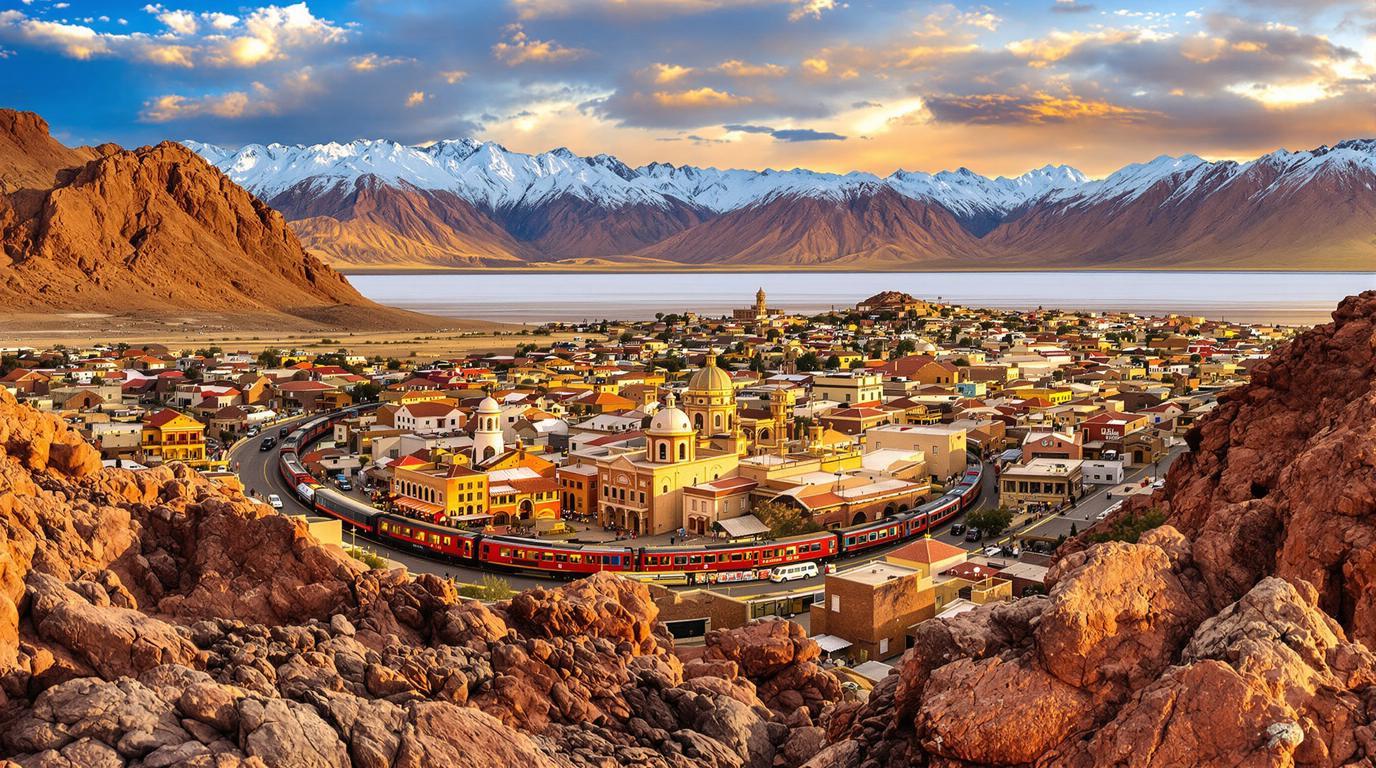Tucked along Bolivia’s southern border with Argentina, Villazón emerges as one of South America’s most fascinating frontier towns. This high-altitude trading post sits 11,335 feet above sea level, where thin air meets rich culture at a critical crossroads between nations. Unlike typical border towns focused solely on commerce, Villazón offers travelers a captivating blend of authentic Bolivian life and access to some of the continent’s most spectacular natural wonders.
The gateway to Bolivia’s natural wonders
Villazón serves as the perfect jumping-off point for exploring Bolivia’s crown jewel – the surreal Salar de Uyuni salt flats. The breathtaking train journey from Villazón to Uyuni offers panoramic views of the Andean highlands that few travelers experience, with railcars winding through rust-colored canyons before revealing the world’s largest salt flat.
“The train from Villazón to Uyuni is Bolivia’s best-kept secret,” explains Maria Flores, a local tour guide. “Tourists rush to La Paz, but those who enter through our little town discover the authentic Bolivia before even reaching the salt flats.”
A colorful cultural crossroads
The town’s bustling Villazón Market pulses with activity from sunrise to sunset. Here, merchants display vibrant textiles, traditional handicrafts, and fresh produce that showcase the region’s cultural heritage. Unlike more touristy markets elsewhere in Bolivia, prices here remain fair, and interactions genuine.
In Plaza Libertad, local musicians occasionally perform traditional Andean music, their haunting melodies echoing off colonial-era buildings. The nearby Parroquia Nuestra Señora del Carmen church stands as the spiritual center of town, its simple yet elegant architecture reflecting the resilient spirit of the highland people.
Geological wonders hiding in plain sight
Just outside town, the dramatic Tambillo Canyon features striking red and orange rock formations that rival more famous destinations like Egypt’s sacred mountains. Even more impressive is Quebrada del Diablo (Devil’s Gorge), where sunset transforms the landscape into a photographer’s paradise of golden light playing across stratified rock layers.
“Many travelers pass through our town without realizing these natural treasures lie just minutes away,” says José Mamani, a local geologist. “Those who take time to explore are rewarded with landscapes as impressive as any in South America.”
A taste of authentic Bolivia
Villazón’s culinary scene showcases Bolivia’s diverse flavors without tourist markup. Small family-run eateries serve hearty stews, freshly baked bread, and the ubiquitous salteñas (savory pastries) that rival those found in quaint European villages known for their culinary traditions.
Practical considerations for visitors
Despite its remote location, Villazón offers surprising affordability, with accommodation, food, and transportation costing a fraction of prices in La Paz or budget-friendly Asian destinations. The town experiences cold, clear winters (June-August) and milder summers (November-February), making shoulder seasons ideal for comfortable exploration.
While primarily Spanish-speaking, many locals understand basic English or Portuguese. Altitude sickness can affect newcomers, so take time to acclimate and stay hydrated upon arrival.
Beyond the border crossing
Most travelers experience Villazón only briefly while crossing between Argentina and Bolivia. Those who linger discover a town where hidden treasures await the curious, from the Tinku Museum’s indigenous artifacts to colorful local festivals that celebrate Bolivia’s rich cultural heritage.
Like undiscovered islands with pristine waters, Villazón remains refreshingly authentic in an increasingly homogenized world of travel. This high-altitude haven rewards those willing to venture beyond the obvious, offering a genuine slice of Bolivian life where the journey itself becomes the destination.
